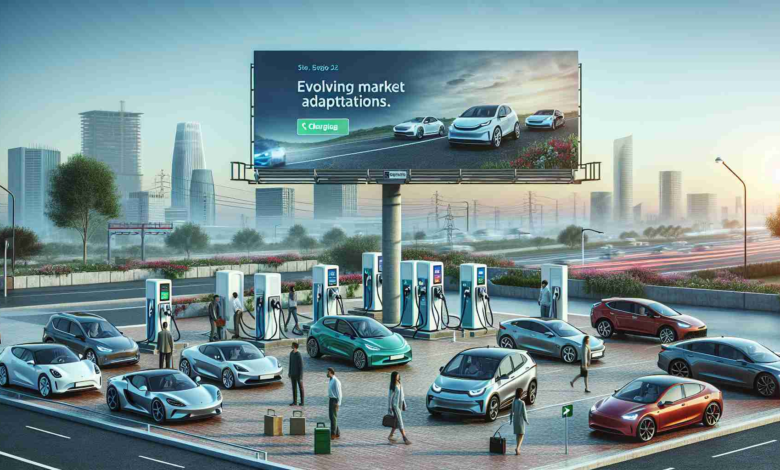The Escalating Influence of Electric Vehicles and Strategic Market Adaptations

The electric vehicle (EV) industry marks a momentous achievement as Mirattery announces it now manages a whopping 10 GWh in battery assets – a figure that underscores the significant role of natural resources in the clean energy revolution. In our analysis, Mirattery’s milestone reflects broader trends in the EV domain and underscores the ecological and economic ripple effects.
This success story tells us much about where the electric vehicle journey is heading. With over 17,000 tons of nickel, 6,300 tons of cobalt, and 5,700 tons of lithium managed, Mirattery’s portfolio is not just a measure of market leadership but a testament to the huge natural capital invested in electric mobility.
Spotlight on Sustainability and Consumer Accessibility
Financial predictions stand firmly on the side of continued EV industry growth, with an expected market surge to billions of dollars. Behind this optimism are factors such as policy backing, cutting-edge innovation, and evolving consumer preferences leaning towards green transport options.
Mirattery’s consolidation of critical minerals points to the double-edged sword of opportunity and duty inherent in the EV industry. On one hand, their market dominance points to scalability and advanced utilization of resources. On the other, it implies a formidable task in ensuring sustainable practices throughout the lifecycle of EV commodities.
Innovative business models like the BaaS are breaking new ground, offering savings on upfront costs for EV buyers – an approach Nio has effectively implemented. Though the industry is paving new paths of accessibility, it grapples with issues like ethical resource acquisition, mining activities’ environmental footprint, and the looming demand for robust recycling measures.
Companies are urged to persist in the pursuit of sustainable EV market methods, considering effective ways to lessen the environmental effects of mining, ameliorating battery productivity and longevity, and fostering comprehensive recycling to recover valuable elements.
Mirattery’s landmark 10 GWh management not only symbolizes impressive EV industry development but pivots the industry towards a conscientious approach in its advancement. As electric mobility penetrates deeper into the market, the onus rests on all players to integrate growth with sustainability and corporate social responsibility.
Exploring the Growth and Challenges of the Electric Vehicle Industry
The milestone achieved by Mirattery in integrating 10 GWh of battery assets into its operations is a mirror reflecting the electric vehicle industry’s profound growth dynamics and its interplay with natural resources. The EV industry’s burgeoning unfolds in the backdrop of a considerable uptake of key minerals, such as nickel, cobalt, and lithium, vital for battery production. Mirattery’s feat is a quantifiable indicator of this sector’s expansion and the immense natural capital that propels the progression of electric mobility.
Market Forecasts Point to a Charged Future
Consensus among financial analysts suggests the EV industry is charging towards a valuation running into the billions. This rally is bolstered by a variety of factors, including governmental policies encouraging EV adoption, breakthroughs in battery technology, and a noticeable shift in consumer sentiment favoring environmentally friendly transportation. This optimism is captured in forecasts that project exponential growth in EV sales, amplified by the emergence of more affordable models and expanding charging infrastructure.
Tackling Industry Challenges with Sustainable Solutions
While Mirattery’s control over vast quantities of essential minerals showcases possibilities for scaling and resource optimization, it casts a spotlight on the urgent obligation to cultivate sustainability. The EV sector is navigating a terrain fraught with challenges such as the environmental impacts of mining, ethical controversies surrounding mineral procurement, and the anticipated strain on end-of-life battery disposal systems.
As a burgeoning number of companies enter the EV space, sustainable mining practices and efficient battery recycling become pivotal. Firms are increasingly focused on pushing the envelope in battery life cycle management, ensuring resources are judiciously used, and innovating in battery technology to enhance performance and longevity.
The deployment of novel methods such as Battery as a Service (BaaS) is redefining ownership and offering consumers cost-effective pathways to EV adoption. For more insights into such innovative models, one can look at companies like Nio, who have incorporated BaaS strategies effectively.
Responsibility and Opportunity Hand in Hand
Mirattery’s landmark in battery asset management not only signifies a colossal leap in the electric vehicle industry’s journey but also pivots the spotlight on the obligation to infuse industry growth with ethical and sustainable practices. As electric vehicles carve a deeper niche in the marketplace, the collective responsibility to seamlessly blend expansion with ecological stewardship and social accountability becomes more pronounced.
For industry leaders, investors, and consumers, the joint quest is to champion an EV future that is not only technologically advanced and economically profitable but also environmentally considerate and socially just. The vision for a sustainable EV ecosystem is one where every success, like that of Mirattery’s, is measured not only in gigawatt hours but in a commitment to the planet and its people.

Leokadia Głogulska is an emerging figure in the field of environmental technology, known for her groundbreaking work in developing sustainable urban infrastructure solutions. Her research focuses on integrating green technologies in urban planning, aiming to reduce environmental impact while enhancing livability in cities. Głogulska’s innovative approaches to renewable energy usage, waste management, and eco-friendly transportation systems have garnered attention for their practicality and effectiveness. Her contributions are increasingly influential in shaping policies and practices towards more sustainable and resilient urban environments.



